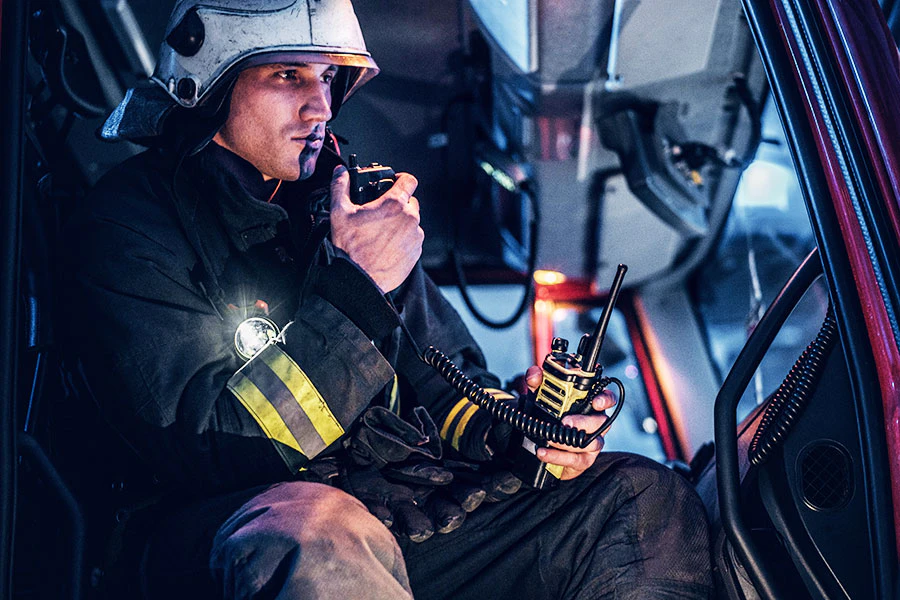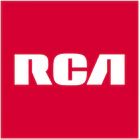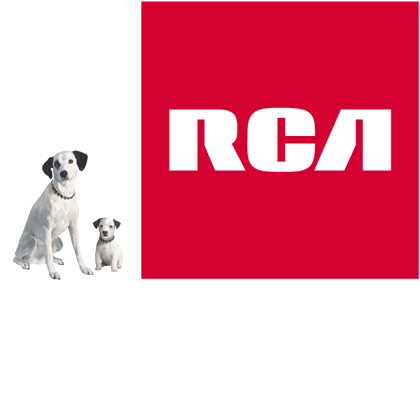
Two-way radio
Stay in touch everywhere
A two-way radio can enable people to call for help, get the support they need or remain in contact with the members of their staff or team. A two-way radio is also valuable when groups go camping, hiking, hunting or anywhere else phone service is spotty and people may become lost or separated from their group.

Analog Vs Digital (PMR or P25)
Among the first things people buying two-way radios must decide is if analog or digital radio are best suited for their needs. More people have analog radios because they've been around a lot longer, are easier to use and cost a lot less than digital radios. Plus, analog two-way radios have many standard options and add-ons like scanning, push-to-talk, and one-on-one or group conversations. Traditional analog two-way radios use bandwidth more productively and are better understood by the public. However, analog radios have limited encryption options and can only allow one two-way conversation on the same channel at one time. And there is no business application software for it.
A growing number of people choose digital two radios for many reasons. While digital two-way radios cost more, their calling range is greater, they provide better voice quality, their reliable coverage area is larger and there's more advanced software for the digital radios. Plus, more than one conversation can be handled on one channel and status, enhanced text messages and unit ID buttons can be embedded in digital radio channels. Digital two-way radios also use less bandwidth, reduce background noise better, are GPS enabled and their batteries last 50% longer.
Frequency Band
A two-way radio can use Family Radio Service band (FRS) and the General Mobile Radio Service or GMRS frequency band with citizen bands and megahertz. Deciding which best suits your needs is key. FRS was developed for use by civilians and the FCC began to specify frequencies for recreational two-way radio use as those between 462 MHz and 467 MHz as competition for radio frequencies increased. People with two-way radios can use FRS channels freely. Multiple parties operating two-way radios close to each other can use channel and privacy codes to avoid other hearing stranger's conversations.
FRS radios are ideal for new or casual two-way radio users. An FCC license is needed to use GMRS radios. The devices are more powerful and can be modified to make their signal stronger, more amplified and far-reaching. GMRS radios can have up to 50 watts of power. They have the same capabilities FRS radios have, plus, GMRS radios can also access special channels FRS two-way radios cannot. FRS and GMRS radios both use FM, however, GMRS radios are louder, clearer and have better sound quality. FRS signals travels about 2 miles. GMRS signals can travel 30 miles or more.


Battery Capacity
The batteries of two-way radios are designed to provide optimum radio performance. But, over time battery capacity naturally decreases. Proper care and maintenance can help to keep battery capacity high and make communications clear and reliable. Before using
new two‑way radio batteries, they should be charged overnight. Plus, it's important to choose the two-way radio battery that's best suited for the way the radio will be used and the environment in which it will be used.
Proper maintenance helps to ensure the capacity of the battery remains as high as possible. To avoid draining the battery when it won't be used for a long time, remove it from the two‑way radio. Store it in a well-ventilated environment where humidity is between 30% to 60% and the temperature is between 68°F/20°C and 86°F/30°C. The optimal charge at which batteries should be stored is 30% to 50%. Under these conditions the battery can be stored for 18 to 24 months without losing it peak capacity to hold a charge. Recharging batteries that are not fully discharged reduces their capacity. Be careful when handling charged batteries. Especially when they are placed inside a pocket, purse, or other type of container which metal objects like as jewelry, coins or keys. Following these tips can help keep two‑way radio batteries in good condition
and help them last longer.
Operating Temperature For Professionals
Operating temperature plays an important role in the performance professionals and amateurs will get when using a two-way radio. To properly charge the battery, it should be stabilized at a room temperature of about 72 degrees first. Charging the battery in temperatures that are below 40°F or higher than 104°F will decrease the battery's life cycle and negatively impact the performance of the radio. The operating
temperature range of a high quality, professional grade two-way radio is between -22 °F
and +140 °F. That is the standard that is set for military grade two-way radios.
Professionals who use two-way radios as a normal part of their work all year round also need devices that will continue to function properly no matter how hot or cold the day gets. However, being able to keep in contact with your family at a theme park on a blazing hot summers day or in frigid temperature while skiing or hunting, is just as important. Therefore, ensuring you and your loved ones have two-way radios that allow
you to keep in contact at all times and make sure everyone is safe is a must. When it comes to buying the right two-way radio, get one that can handle extreme temperatures.


Range Of Two-Way Radio
The range of a two-way radio is the distance apart the two people communicating with each other can be. Generally, the maximum range for two-way radio communication is 36 miles. Obstacles like trees and buildings can reduce the distance the radio waves can
travel. Most two-way radios have a frequency range of from 150MHz to 900MHz. If you will be using your two-way radio in wide open outdoor spaces using VHF will give you a greater range. UHF signals won't travel as far as VHF, but they can penetrate wood,
steel and concrete better.


 Canada (English)
Canada (English)  México (Español)
México (Español)  USA (English)
USA (English)  América Central y el Caribe (Español)
América Central y el Caribe (Español)  Argentina (español)
Argentina (español)  Bolivia (español)
Bolivia (español)  Chile (español)
Chile (español)  Colombia (español)
Colombia (español)  Equador (español)
Equador (español)  Deutschland (Deutsch)
Deutschland (Deutsch)  France (Français)
France (Français)  Nederland (Nederlands)
Nederland (Nederlands)  United Kingdom (English)
United Kingdom (English)